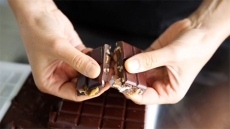Spontaneous gestures can help children learn better whether its spoken language or sign language, according to a study.
Children who can hear use gesture along with speech to communicate as they acquire spoken language.
“Those gesture-plus-word combinations precede and predict the acquisition of word combinations that convey the same notions. The findings make it clear that children have an understanding of these notions before they are able to express them in speech,” said Susan Goldin-Meadow, a professor in department of psychology at University of Chicago.
In the study, she examined how gesturing contributes to language learning in hearing and in deaf children.
“Gesture is a flexible way of communicating, one that can work with language to communicate or, if necessary, can itself become language,” she added.
In addition to children who learned spoken languages, Goldin-Meadow studied children who learned sign language from their parents.
She found that they too use gestures as they use sign language.
These gestures predict learning, just like the gestures that accompany speech.
Finally, she looked at deaf children whose hearing losses prevented them from learning spoken language, and whose hearing parents had not presented them with conventional sign language.
These children use homemade gesture systems - called homesign - to communicate.
Homesign can be the first step toward an established sign language.
“Gesture can be the basis for a self-made language, assuming linguistic forms and functions when other vehicles are not available,” she concluded.
The article was published online in the journal Philosophical Transactions of the Royal Society B.





